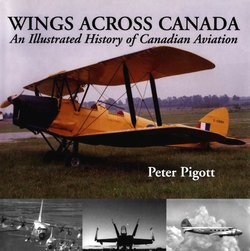Читать книгу Wings Across Canada - Peter Pigott - Страница 12
На сайте Литреса книга снята с продажи.
ОглавлениеCourtesy of the Woollett family
FairchildFC-2W-2 “G-CART.”
FAIRCHILD FC-2 AND W-2
American inventor Sherman Fairchild came to aviation through aerial surveying. In 1922, his Fairchild Aerial Survey company was contracted by the Laurentide paper company for forest surveying at Grand Mere, Quebec, using a Curtiss Seagull flying boat. Fairchild knew at first hand the conditions that the pilots faced and found the Seagull (and later the HS-2L flying boats) inferior for surveying. The cameras were unwieldy, their users needed protection from the cold and yet as much visibility as possible around them, and the aircraft were incapable of year-round service and restricted to use on the water. Looking for a stable platform for aerial surveying, Fairchild designed his own aircraft, calling it the “All Purpose Monoplane.”
Built at the Fairchild Airplane Manufacturing Co. in Farmingdale, New York, the FC-1 (for Fairchild Cabin) was everything that an aerial photographer needed. Powered by a 220 hp Wright J-5 Whirlwind engine, its body was made of welded steel tubing that narrowed to three longerons, earning the aircraft the name “razor back.” Its undercarriage was interchangeable for wheels, skis, or floats, and it was the first aircraft to have Bendix hydraulic brakes. For aerial photography, Fairchild put in as many windows as he could, and, in a first for commercial aviation, the large windshield was shatterproof. But what really distinguished the FC-1 from the rival Fokker Universal was the heated, enclosed cabin for the pilot and four passengers. Another unique feature was the folding wings: two men could fold the forty-four-foot wingspan into a thirteen-foot unit for easier (and cheaper) storage. Capitalizing on the success of the FC-2, Fairchild then built the larger FC-2W-2, which could accommodate seven passengers and had a more powerful Pratt & Whitney Wasp engine. Because it had four longerons, it was called a “turtle back.”
Author’s Collection
RCAF Fairchild FC-2W-2.
So durable were Fairchild’s planes that Admiral Byrd took an FC-2, christened the “Stars and Stripes,” to Antarctica with him in 1927 and left it there. Five years later, the second expedition recovered it out of the ice and flew it, taking it back home in 1934, where, after much use and renovation, it is now on display at the Smithsonian National Air & Space Museum. Pan American Airway’s first airmail flights were by FC-2 in 1928 between New York and Miami. The first regular United States—Canada cross-border service was conducted by Canadian Colonial Airways using FC-2W-2s between Montreal (St. Hubert) and New York. The RCAF bought Fairchilds of both models for communication and survey work, modifying them with Armstrong Siddeley Lynx engines. Canadian Airway’s James Richardson was a good customer, buying the first of seven FC-2s in 1927 and eight FC-2W-2s through the 1930s.
Many of the bush pilots flew Fairchilds, especially the storied “Flying Postmen” of Quebec, who took off from the Quebec City suburb of Ste. Foy to conduct a winter airmail service to isolated communities. None were as flamboyant as Walter (Babe) Woollett. A former Royal Air Force pilot, Woollett immigrated to Canada in 1928 to work for Fairchild Aerial Surveys at Lac a la Tortue. A strong candidate for Canada’s Aviation Hall of Fame, Woollett, in retirement in Hawaii, penned a witty autobiography, Have A Banana, recounting his exploits in the FC-2W-2 (G-CART) and later the Fairchild 71 (CF-AAX).
Courtesy of U.N.N.
Fairchild FC-2W-2 with pilot and engineer; note stepladder and funnel for pouring in heated oil to get the engine started.
Courtesy of the Woollett family
Fairchild in the air.
Courtesy of the Woollett family
Fairchild at Fort George, Quebec.
